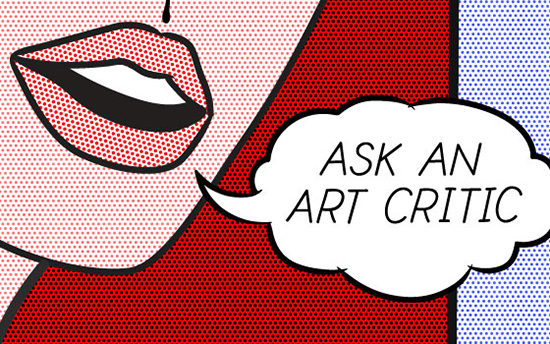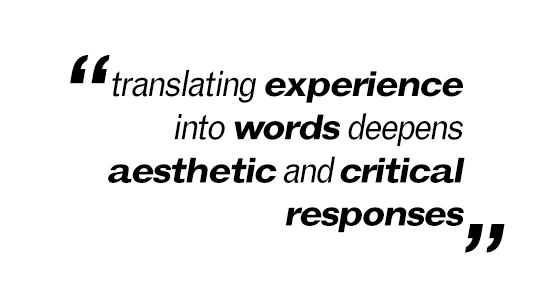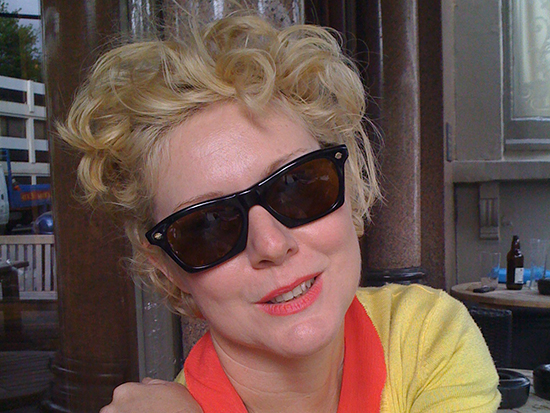Advancing the art of reviewing
Keith Gallasch: interview, Erin Brannigan, Reviewing the Arts, UNSW

In these challenging times for publishers, journalists and reviewers, it’s encouraging to see UNSW School of the Arts & Media offering a new one-semester intensive course, Reviewing the Arts, which includes consideration of the role of the critic in the digital era. While the future of quality criticism in a mutating mediascape is uncertain and payments to reviewers diminish, new platforms and innovative models for criticism will emerge. In the meantime, such a course can at the very least help sustain the artform that is reviewing.
The course has been devised by Senior Lecturer Dr Erin Brannigan who has written extensively for RealTime, wrote Dancefilm: Choreography and the Moving Image (Oxford University Press, New York, 2011) and co-edited, with Virginia Baxter, Bodies of Thought: 12 Australian Choreographers (RealTime & Wakefield Press, 2014). She is currently conducting research towards a book on dance and the visual arts. Brannigan’s extensive writing career and depth and breadth of arts knowledge as well as engagement with the practicalities of dance film curation for film festivals (she was founding director of Reeldance in 1999) make her an ideal teacher in this field.
I first ask Brannigan where the idea for the course came from. She tells me, “I was asked to contribute to Performance Studies and was looking for something I was really interested in teaching and also for ways to teach across disciplines. I really enjoyed doing that in the Dance Major I used to teach—I had a subject called Composition across Music and Dance which I co-taught with a music lecturer and it went really well. So I proposed Reviewing the Arts, which would be open to all of the students in our school and also as a General Education subject for students in other programs as well. I’d have a mixed cohort and also be involved in team-teaching, something in which I’d had expertise. So it seemed like a good idea.”
The course has a wide ambit: dance, theatre and performance, music, visual arts and film. How are they all accommodated? “There are two strategies. One is to bring in experts from those areas; the other is to find generic concepts and frameworks for students to think through their disciplines.” Central to the latter, said Brannigan ”is the big one, the subjective/objective framework and the various ways it manifests in different kinds of reviewing and evaluation.” She adds too “the tension between getting something on record—particularly for the more ephemeral arts—and the making of judgments.” Judgment, she points out, has to also be balanced with advocacy, for example “the kind RealTime has focused on, its writers educating and bringing readers with them by introducing artists and their processes.”
Students taking the course will find that they have to acquaint themselves with some less than familiar artforms. This will require a willingness to engage. Brannigan notes, however, that “some students identify with disciplines other than the ones they’re enrolled in. You might have an Economics student who’s very interested in music reviewing or a Literature major writing about film. I have worked with different discipline groups at various times [and found] they had areas of interest in their private lives which were quite different from what they were being trained in. Some are already blogging and contributing to substantial online publications.”
The course also deals with ethical issues like conflict of interest. In our experience at RealTime the rise of social media and blogging has led to a widespread misapprehension that it’s fine to review the work of friends or professional associates. Brannigan sees this issue in terms of “communities of criticality,” not just the difficulty of writing about artists one knows but, more broadly, of talking to and writing about your community. She cites her own experience of moving away from reviewing: “the dance community in Sydney is so small that eventually it became too difficult for me to write critically about the work of people I knew.” She thinks that in a larger community, “the writer thinks in terms of the the artist reading their words as a way of opening up a conversation, as might happen in publications like New York Times Review.”
The course involves studying 20th and 21st century arts journalism and coming to understand various modes and styles. There are any number of review formulae; we all recognise the standard ones. Brannigan says she adapted a set of formulae developed by guest lecturer Sacha Molitorisz “when he was having to write short, punchy pieces for Sydney Morning Herald’s Metro for many years. They’re a very good starting point to thinking about what makes a good review.” At the other end of the spectrum, the course includes Virginia Woolf, Gilles Deleuze (his fascinating little book on Francis Bacon) and the literary taste-determiner of the moment, James Wood.
“Of course,” says Brannigan, “there is no formula for a good review—it’s an unquantifiable ‘something else.’” As well as discernment and judgment, ‘voice’ is critical, a recognisable style as opposed to “the anonymity of blogging voices” that Brannigan’s students tell her they find generic. With a voice, she says, “you garner attention and gain a readership. Good reviewing is so much about the quality of the writing, the deployment of metaphor and voice.”
The course’s practical approach entails “seminars of 90 minutes each with writing exercises in the first half-hour to unlock new approaches, new voices.” Brannigan thinks that descriptive writing is a good way into developing quality writing: “it forces students to be specific and to think beyond clichés.” She adds that it also encourages them to be critical about their writing. In her writing workshop at Melbourne’s Dancehouse earlier this year, leading American dance reviewer Deborah Jowitt likewise emphasised the importance of description as fundamental to writing criticism.

I notice in the course outline the term “post-descriptive” criticism. Brannigan explains, “There was an excellent conference at the Walker Center a couple of years ago on digital arts journalism in which a number of people spoke about the possibilities for online reviewing that weren’t so text-based. If video excerpts or complete performances are now available online, do we need to recount what we’ve seen or do we just need to move on to judgment? Another possibility is not to respond with text but with image. One of the speakers talked about the Instagram review, where you respond with a series of images that becomes the commentary. We play around with these ideas.”
I comment that some non-descriptive approaches have yielded very personal, quite poetic accounts of artworks, valid responses that might be enlightening for those who’ve also experienced the work, but not for those who were not there. Brannigan notes that RealTime writing often strikes the balance between the descriptive and the poetic, “but when a piece refuses to give me that I get very frustrated.”
I point out that it’s largely dance reviewers who are inclined to poeticise. “It’s a big debate in Dance Studies,” says Brannigan. “I think it was in the late 1980s that Deborah Jowitt and Roger Copeland went head-to-head on this. He accused the Jowitt ‘school’ of being all description and without substance. And Jowitt’s famous response was that the substance was in the description. I really believe that. To be fair and respectful, I think it’s very important that you paint a clear picture of the work.” I concur, pointing out that it’s what we call in our RealTime writing workshops, “fidelity to the work.”
Descriptive writing doesn’t come easily. It requires heightened sensory awareness and much vocabulary-building to be able to translate the experience of a work into words that will be sufficiently evocative for the reader to have a sense of it. It’s easy to make judgements, but to describe the qualities, say, of sounds in music or sound art can be very challenging. Brannigan thinks “music and dance suffer similarly in this translation when you don’t have a character or a story or a set to describe. Expanding your vocabulary and practising the use of artform-specific language is part of the project, of being accurate and being faithful to the work.”
I’m amused to see that Brannigan’s students are tasked with “writing a crap review.” The parodying of reviewers has a substantial history and requires accuracy, as Brannigan notes, “in pulling apart a review and working out why it’s bad. It’s a huge help in understanding what to avoid.”
There is a big-picture dimension to the course: aesthetic philosophy and also major shifts in aesthetics, as evident in tensions between Modernism and Minimalism in the visual arts in the 1960s. Brannigan describes the course as “running the gamut from short, blog-type reviews to quite dense, high-end reviewing and writing, which is why the seminars are quite long. We need to spend time with the writing and what we’re reading.”
Brannigan tells me that Reviewing the Arts attracted 40 students, “a good number for a first time course. It has potential but I don’t want it to grow too huge because I like the intimacy of the writing workshops and being able to be across everybody. If it attracts Media students, we’ll look at including audio and video reviewing.” We end the interview concurring that specialised artform and genre knowledge is vital to reviewing but that looking beyond one’s niche is critical, and that’s what this course offers.
Doing a course in art reviewing not only broadens horizons. The act of translation from experience into words for an audience of readers deepens aesthetic and critical responses, as any experienced reviewer will attest. Not every student will become a reviewer, but as the course description puts it, “Reviewing the Arts supports those of you who may find yourselves in arts administrative and freelance/portfolio careers where writing for and about the arts plays a central role.” I’d like to think that the course will generate new reviewers and, in the long-term, new ways and kinds of reviewing.

Erin Brannigan
Read about Dr Erin Brannigan here.
UNSW School of the Arts & Media
RealTime issue #134 Aug-Sept 2016






